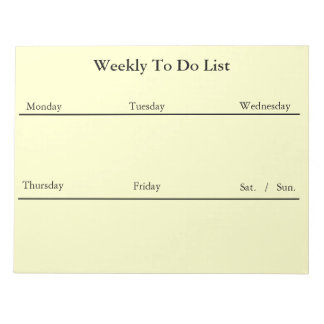What’s the difference between types of in-home care workers?
Personal Care Assistants (PCAs) are not licensed and have varying levels of experience and training. They serve as helpers and companions — providing conversation, bathing and dressing, neighborhood walks, light housekeeping and meals. They can offer transportation to shopping and appointments, as well as prescription pickup. Training requirements vary by state, and some states do not have formal requirements. PCAs are the least expensive care providers, but they are typically not covered by Medicare or other types of health insurance. The median hourly wage is $10.54, according to the Bureau of Labor Statistics (BLS), but the hourly charge for this and other in-home health service can be considerably higher in tight markets and urban areas. Expect PCA services to be an out-of-pocket expense.
Home Health Aides (HHAs) monitor the patient's condition, check vital signs and assist with the necessary parts of daily living, including bathing, dressing and using the bathroom. HHAs also provide company, do light housekeeping and prepare meals. HHAs are trained and certified, and requirements differ from state to state. The median hourly wage is $10.87, according to the BLS.
Licensed Nursing Assistants (LNAs) and Certified Nursing Assistants (CNAs) observe and report changes in the patient, take vital signs, set up medical equipment, change dressings, clean catheters, monitor infections, conduct range-of-motion exercises, offer walking assistance and administer some treatments. All medical-related tasks are performed as directed by a Registered Nurse (RN) or Nurse Practitioner (NP). CNAs also provide personal patient care — such as feeding, dental help, bathing, bathroom assistance and home tasks that include changing bed linens and serving meals. Median hourly wage for LNAs is $12.78, according to the BLS.
Skilled Nursing Providers meet federal standards for health and safety and are licensed by the state. They manage, observe and evaluate your family member’s care, and provide direct care that nonmedical and home health aides cannot — including administering IV drugs, tube feedings and shots; changing wound dressings; providing diabetes care; and providing caregiver and patient education. Some are trained in physical therapy, occupational therapy and speech therapy. Medicare covers home health skilled nursing care that's part time and intermittent, and arranged by a Medicare-Certified Home Health Agency (CHHA). Median hourly wage is $21.20, according to the BLS.
Registered Nurses (RNs) hold a nursing diploma or associate degree in nursing (ADN), have passed the NCLEX-RN exam administered by the National Council of State Boards of Nursing (NCSBN) and have met all the other licensing requirements mandated by their state’s board of nursing. They provide direct care, can assist doctors in medical procedures, offer guidance to family members, operate medical monitoring equipment and administer medications.
Step by Step: Hiring a Caregiver
Step 1.
With your loved one, write down needs and limitations, level of assistance needed, likes and dislikes, expectations and doctor recommendations. If your family member is covered by long-term insurance, Medicare or Medicaid, you’ll need a doctor’s report confirming that the need for in-home care. Medicare does not cover personal care if it is the only care needed.
Step 2.
Find a trustworthy, compassionate and responsible caregiver. Do you feel best going through an agency? Friends? A registry?
If the answer is:
An agency
Regardless of whether your family member is Medicare-eligible, compare and research agencies in your area by using the Medicare guide to patient-rated agencies and arrange a consult. Before you sign an agency contract, review our checklist of important questions. Ask them.
Upsides:
Prescreened workers. Caregivers have undergone and passed a background check.
Relevant experience. Agencies are likely to have some caregivers with experience in caring for people struggling with the same illness or condition affecting your loved one.
Backup care. If the caregiver is sick or doesn’t work out, an agency usually can find a replacement quickly.
Addressing problems. Concerns and complaints are reported to and handled by a supervisor.
Fast upgrades. If care level or diagnosis changes, most agencies can quickly provide a worker with more training.
No paperwork. You pay the agency. They take their percentage, pay the worker, and handle payroll, taxes and scheduling.
Liability protection. If a caregiver is injured on the job, the agency covers the cost.
Downsides:
Expense. You pay more — sometimes substantially more — for an agency-provided caregiver.
Limited negotiation. Individuals are generally more flexible about hours, overtime and duties than agencies.
Minimum hours. Many agencies do not allow a part-time schedule.
Little choice. The agency chooses the worker, who may or may not mesh well with you or your family member.
Option 1: Ask friends and neighbors who have employed caregivers for recommendations, names, phone numbers and hourly rates of those they found to be outstanding. Get specifics. Your neighbor’s priorities might not be yours.
Option 2: Consult the community. Leave your name and number and the particulars of the job — including needs and hourly wage — with the receptionists at nearby houses of worship, senior centers, local gyms, yoga studios and community centers.
Option 3: Call your Area Agency on Aging and ask if they have recommendations.
A registry
Local — and sometimes state — employment registries will have lists of available nurses and aides in your area. You call the person directly.
Upsides:
Flextime. It is more likely you will find a part-time caregiver or one who can work an unusual schedule.
Spend less, pay more. Without the higher agency fee, you may be able to pay more for a more skilled or experienced provider.
Your rules. Agency caregivers must follow agency rules. With a nonagency caregiver, the two of you and the person needing care can figure out what works for everyone.
Better fit. You may be more likely to find a caregiver who speaks a second language, shares interests with the care recipient or has personality traits your loved one will appreciate.
Downsides:
Time. A DIY search and screening can take days to weeks. Agencies often can arrange next-day care.
Emergency coverage. Sick days, vacation or a fast departure for a new job can upend everyone’s schedule. There’s no fallback plan unless you arrange it.
You investigate. You will need to screen and verify credentials.
Paperwork. You are responsible for getting an Employer Identification number (EIN), and for withholding and paying Social Security, Medicare and unemployment taxes. You also must confirm that the applicant can work legally in the United States.
Protection. Agencies insure their own. You may be held liable for an on-the-job accident unless you buy liability insurance that covers the caregiver. Workers’ comp — which covers lost wages and medical care — is required by some states and recommended in all by some legal experts.
Training. Agency health aides are trained. You may want to pay for a training class or refresher.
You’re the boss. The person who handles your complaints is you.
Step 3.
You — and your loved one, if possible — should interview applicants together. Prepare written questions. Be clear and honest about job requirements.
A major consideration when hiring a caregiver is the associated cost. In some cases, you may be able to get help paying for in-home care.





